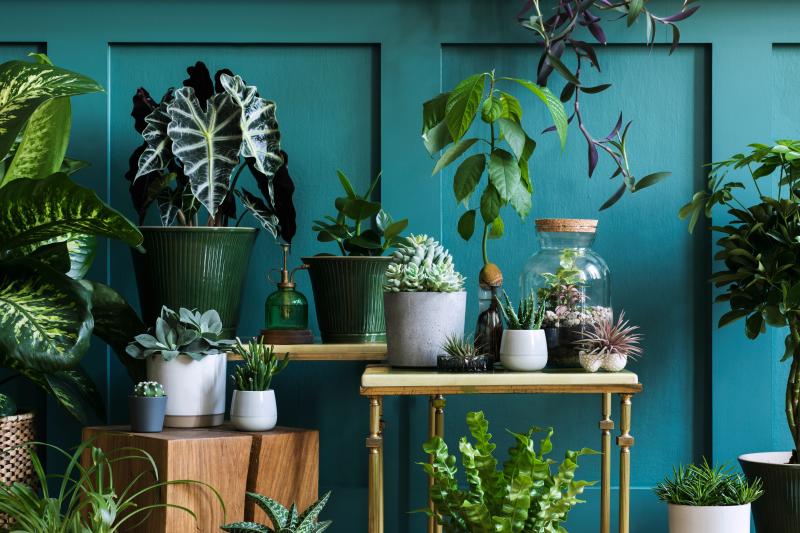Share:
Give houseplants a rest with less water in winter
December 27, 2023
Ever since the ancient Romans heated with fires and indoor pipes, central heating has been a part of our winter homes. Unfortunately, warm, dry air isn't the best for most houseplants.
The trick is to imitate the tropical environments that most houseplants come from. Specifically, try to imitate the winter conditions of the place where the plants are native. For example, plants from the jungle, where winter and summer are the same, usually do not have the same dormant period as plants that come from temperate zones. While there are some general basics, keep in mind to always mimic the plant's natural outdoor winter habitat as much as you can.
Your home's humidity level can drop to just 10 or 20 percent during winter, and most houseplants need around 50 percent humidity. Cluster your plants together to naturally increase humidity. As plants breathe, they release moisture, and clustering plants will increase the moisture in the air.
You can increase humidity by misting plants daily with water. The tried and true method of putting pots on trays of pebbles and filling the trays with water will increase humidity. Occasional baths with gentle spray from the bathroom shower will also help indoor plants adapt to the central heating.
Since winter is a time of reduced light, most plants stop actively growing and therefore do not need fertilizer. Move your houseplants closer to windows, if you can. Not only is there less sunlight during winter, but the rays also come in at a lower angle. Look for a south-facing or west-facing window that stays sunny all day. However, be careful and don't put houseplants too close to a frosty window. Be sure the windows are clean to let in as much natural light as possible. You can also add artificial light from grow lights or even fluorescent bulbs. Most grow lights are weaker than direct sunlight, so your plants may need an extra few hours a day of artificial light. Rotate your pots 1/4 turn every week so the plants get the same amount of light on each side.
It sounds counterintuitive, but many houseplants need less water during the winter. Even though indoor air is drier, plants grow slower during colder months; indeed some plants will even go completely dormant. This means that houseplants need less water to stay hydrated. Watering too much during the winter can result in root rot. Poke your finger into the soil to feel if it is dry. When watering, saturate the soil until water drains out of the bottom of the pot. Bear in mind that different houseplants have different water requirements. Drought-tolerant succulents and cacti might need very little, if any watering at all, while lush tropical plants will need more regular watering.
Keep your plants away from drafts. Avoid putting them near heating ducts or even electronics that give off lots of heat. Many plants do well in kitchens and bathrooms as long as they get enough light.
Give your houseplants a rest with less water over the winter and you will have greenery for another year!






















































